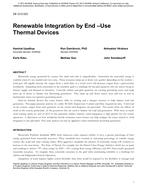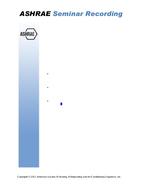Energy savings attributable to efficient lighting and office equipment technologies are often quoted for the technology in isolation. However, total energy savings will depend on interactions with the building HVAC system. We predicted overall energy savings from parametric simulations of a typical North American office building. Cooling and heating energy impacts were expressed as a fraction of the direct electrical energy savings due to the adoption of efficient lighting and office equipment technologies DC/DL and DH/DL, respectively). DC/DL varied little with the source and magnitude of the direct savings or with building envelope variations. However, cooling system type had a large effect. DH/DL varied substantially with envelope variations and the magnitude of direct savings. For cooling, our results agree with a previously published simplified method and may expand the method’s scope. However, for heating, our results suggest that the existing simplified method may not be generally valid.
Units: SI
Citation: ASHRAE Transactions, 1998, Vol. 104, Part 2, Toronto, ON
Product Details
- Published:
- 1998
- File Size:
- 1 file , 250 KB
- Product Code(s):
- D-7675


